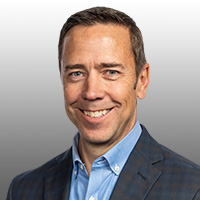Insight Paper August 23, 2022
The art and science of staffing forecasts.
The art and science of staffing forecasts.
Healthcare workforce planning and staffing is a balance of art and science with a goal to create a positive workplace while also being efficient and competitive within the marketplace. The healthcare industry now balances between “work from home” and “in the office” cultures – some of the work can be done remote, while direct patient care may require a staff member to be present. Telehealth has certainly become more popular and accepted since March 2020, but there will always be a need for in-person care. The transactional or operational side of healthcare also requires extensive planning and forecasts to encourage a positive culture while paying attention to the bottom-line margins.
Clinical/Patient Care
There are many aspects to clinical staffing, these range from required education, current healthcare provider demographics (i.e., aging workforce) to possible union contracts impacting shift duration, staffing ratios, and time-off from work. The supply and demand for clinical care at all levels compounds the level of difficulty for workforce planning. In addition, according to employment projections from the U.S. Bureau of Labor Statistics for 2020-2030 overall healthcare occupations are projected to grow 16%, while specific healthcare occupations have growth forecasts from 9% up to 45%.
The key to staying in front of clinical staffing is through planning and retention. Sanford Health has moved from a manual calculation to utilizing artificial intelligence to create schedules up to 18 months in advance. This helps with recruitment and retention of their nursing staff as they look at predictive staffing levels, especially as the industry is coming out of COVID related hospital stays. Better staffing predictions and levels are the foundation to employee and physician engagement along with long-term retention.
Recruiting and hiring the new healthcare graduates is equally important. Sign-on bonuses are still a powerful tool; however, millennials may be looking for on-the-job perks such as financial support for continued education (masters or doctorate programs), education loan forgiveness, on-site fitness centers, and flexible schedules. Revival of the “reverse auction” structure for open shifts or promoting flexibility may be in the interest of the healthcare employer too. As compared to using high-cost agency or temp nurses, the reverse auction allows qualified nurses to bid on open shifts at a lesser dollar per hour. The qualified nurses can bid down the cost of shifts against each other until finally accepted and shifts are filled. This allows nursing staff to supplement their pay along with creating a flexible work environment.
Transactional or Operational Business
Within healthcare, transactional or operational services are the support functions that are critical to the bottom line. These services range from call centers for billing, registration, or prior authorization along with medical staff offices and possible nurse triage functions. In the past, there was some rigor applied to these areas, but often it was a retrospective based on last month, quarter, or year.
For call centers, the Erlang C formula is the well-established tool for staffing based on call volumes including service level components (i.e., handle time, service level, answer time). Although the calculation itself is over 100-years old, its use today is on-going and continues to be the call center standard. The goal of the staffing calculation is to always have the correct number of agents on duty, with no under- or over-staffing. There are limitations and constraints to the Erlang model to consider, but without utilizing this model a call center will be poorly staffed.
Development of other support department “staffing calculators” may lead to a more efficient work team based on task completion and staffing levels. To build a calculator, the basic job tasks must be documented along with time to complete the tasks and accurate volume capture. Actual time studies can be completed to capture this data, but one must be cautious to avoid biased baseline time capture. With proper development of a staffing tool, a department leader can model and input different scenarios from new hires (longer task time) to volume impact based on changes to contracts or policies.
Conclusion
It has often been said that “hope is not a method for improvement” and thus workforce planning is critical to the success of the healthcare provider and industry. The impact of remote work, telehealth, and the continued need for direct patient care will have healthcare leadership balancing various tools and technology. The result is to also balance employee engagement, patient satisfaction, and positive health outcomes. Leveraging artificial intelligence, staffing tools and calculators along with understanding the incoming workforce needs will yield positive gains for workforce planning.
How Can Trexin Help?
The art and science techniques of healthcare workforce planning are continually evolving and expanding based on industry trends and market competition. Whether it’s looking at past staffing data, trends within the industry, or forecast volume changes for your clinical and transactional teams, Trexin can assist with all your organization’s workforce planning needs.
Contact a Trexin Advisor to learn how we can help you “get to done” with your organization’s staffing challenges from current state advisory to future state implementation.


